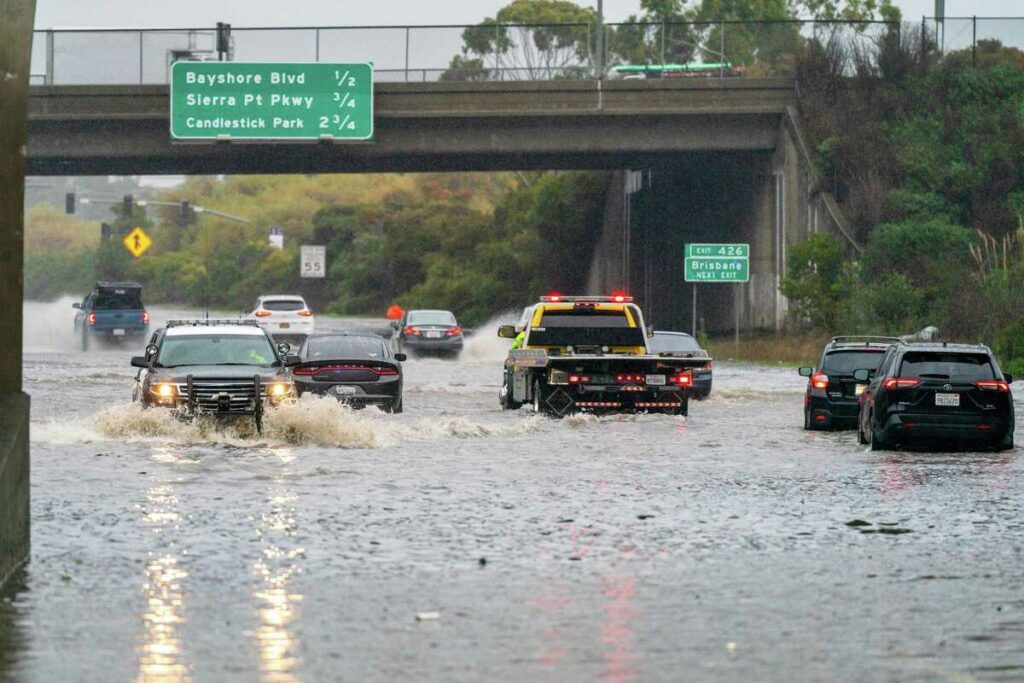
Remember the December deluge that swamped San Francisco?
Imagine harnessing AI to better prep for such storms! Climate change fuels extreme weather, posing a challenge for coastal cities. But fear not, innovation’s at work!
Resilience
The impact of climate change has intensified the frequency and severity of catastrophic storms, causing devastating flooding and extreme heatwaves in cities around the world. Coastal cities like San Francisco face increasing threats from rising sea levels and torrential rains. As the urgency to mitigate these risks grows, innovative solutions are emerging to guide urban planning and decision-making. One promising tool is the use of “digital twins,” a new form of simulation driven by artificial intelligence (AI). These digital replicas of cities incorporate intricate data sets encompassing infrastructure, demographics, and climate vulnerabilities. Through the power of machine learning, digital twins offer city planners the ability to assess and prioritize climate-resilient initiatives with unprecedented accuracy.
Digital Twins: A New Paradigm in Urban Planning
Traditional approaches to combating climate change impacts often involve costly infrastructure projects like drainage systems, elevated roads, and relocations. However, these mega-projects are both resource-intensive and uncertain in their efficacy. The adoption of digital twins, propelled by advancements in AI and machine learning, marks a paradigm shift in urban planning. These virtual models enable city leaders to conduct intricate cost-benefit analyses of climate projects and pinpoint the most effective strategies.
The Resilience Toolkit: Insights into Future Challenges
Cities grappling with the complex task of becoming flood- and heat-resilient can benefit from the strategic insights offered by digital twins. By aggregating extensive datasets and utilizing accurate mathematical models, digital twins provide comprehensive perspectives on the potential impacts of climate change. A prime example is Urban AI Solutions’ Urban Climate Resilience Toolkit, a cutting-edge application that immerses planners in 3D simulations of how flooding and extreme heat might affect their populations. This allows for a systematic evaluation of various fixes and their potential efficacy.
Green Spaces and Urban Cooling
Amid the arsenal of climate-resilient strategies, the simplest yet most potent solution is the integration of green spaces and trees into urban landscapes. Trees and vegetation act as natural sponges, absorbing excess water during floods and mitigating the “urban heat island” effect during heatwaves. However, due to space limitations, determining where these green plots can have the greatest impact becomes a challenge.
Filling Data Gaps and Enhancing Accuracy
The success of digital twins hinges on the richness of data and accurate mathematical models. Developing these models requires collaboration between climate scientists, engineers, and urban planners. To achieve this, companies like Urban AI Solutions have embarked on ambitious data-gathering missions, combining publicly available information, 3D models, and even on-ground video-mapping. By incorporating demographic data, digital twins can also evaluate the vulnerability of specific populations, ensuring equitable resilience strategies.
Real-World Impact and Future Possibilities
Digital twins have already demonstrated their potential in real-world scenarios. For instance, Bentley Systems aided Rotterdam in optimizing water pumps to conserve resources and reduce emissions. The scope of digital twin applications is expanding, with projects like Singapore’s comprehensive model that encompasses streets, buildings, and underground utilities. While digital twins won’t replace concrete action, they serve as invaluable guides, steering cities toward effective measures.
Conclusion
In a world increasingly vulnerable to the impacts of climate change, cities must urgently adopt innovative approaches to build resilience. Digital twins powered by AI and machine learning offer a game-changing solution, enabling cities to make data-driven decisions, prioritize climate projects, and simulate the effectiveness of various strategies. By harnessing the potential of digital twins, cities can navigate the complex landscape of climate change with greater precision, ensuring the well-being of their residents and the sustainability of their future.